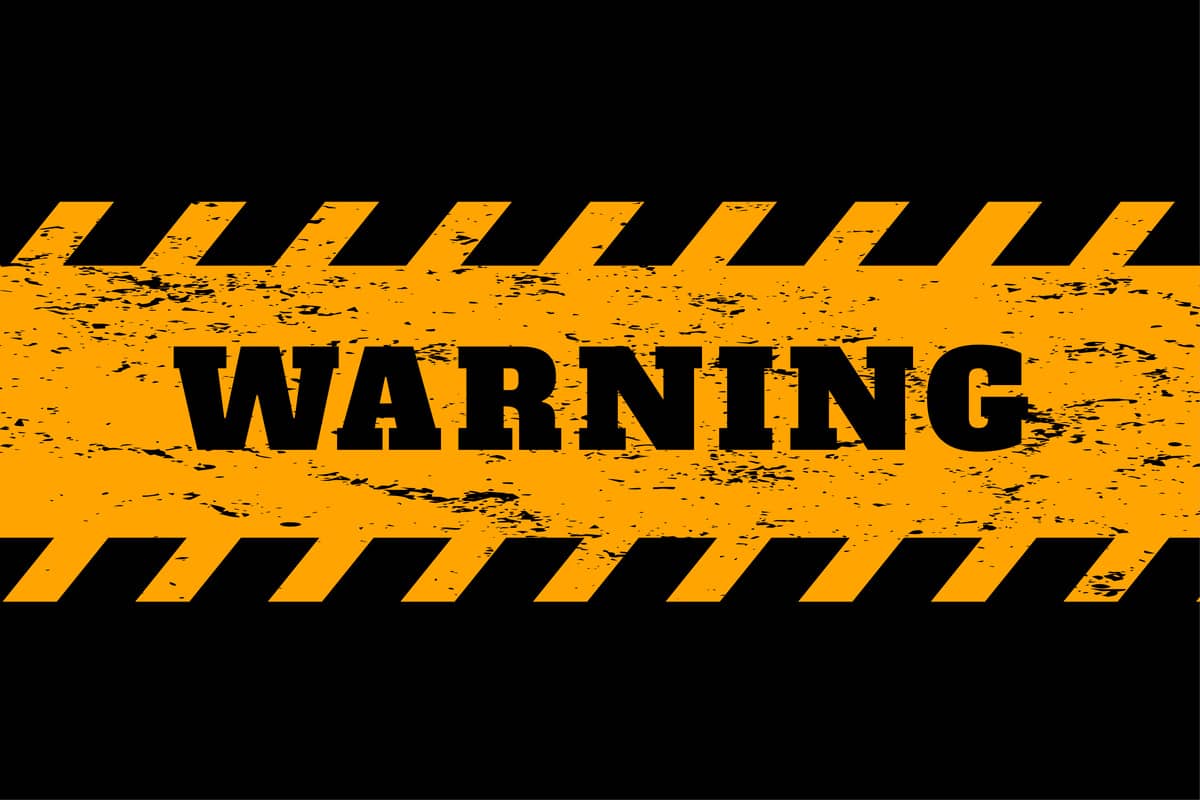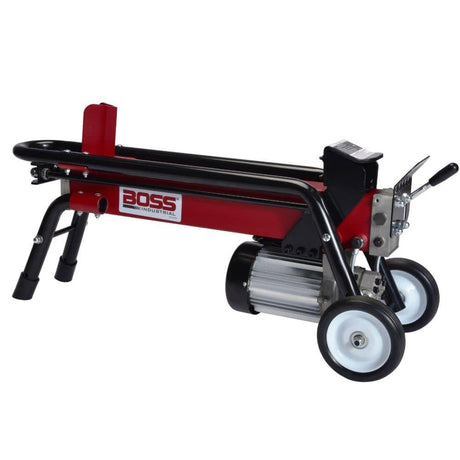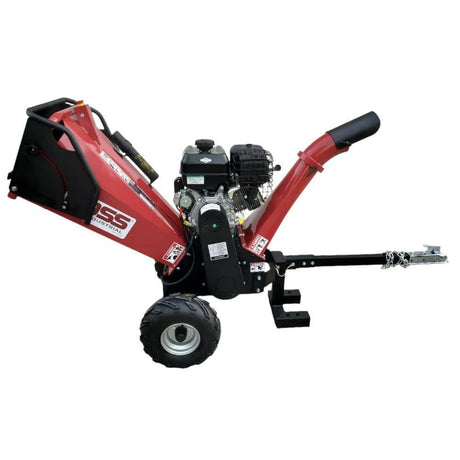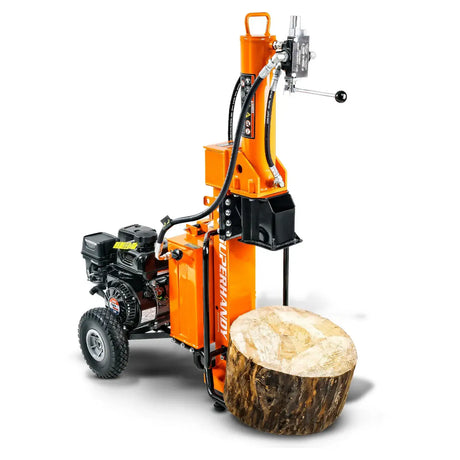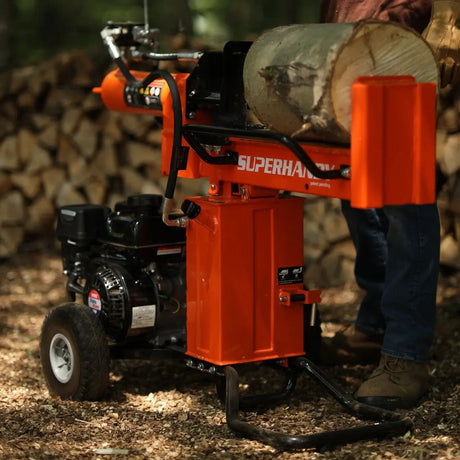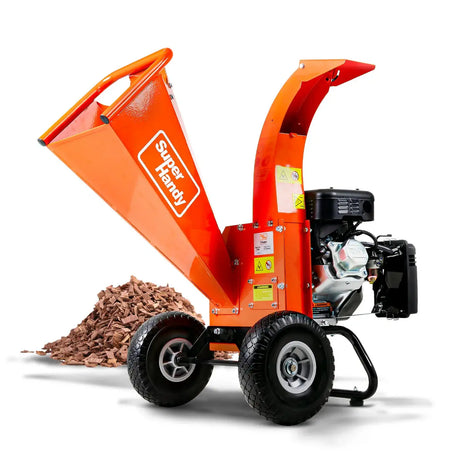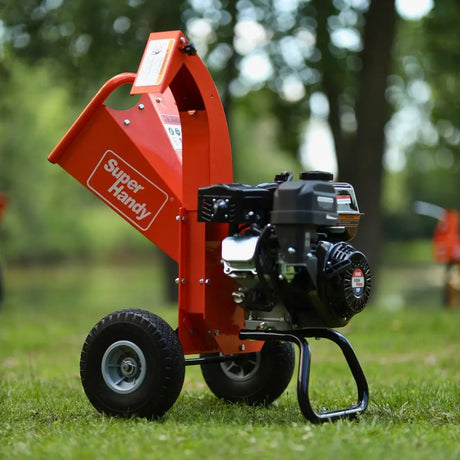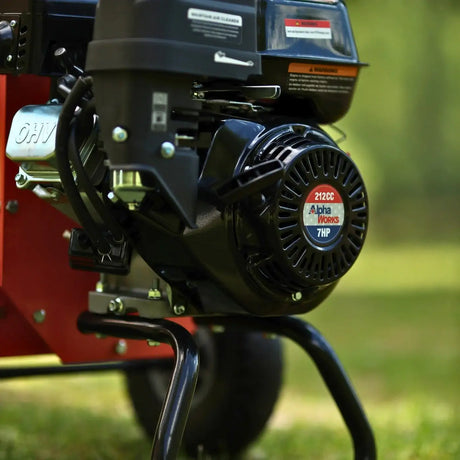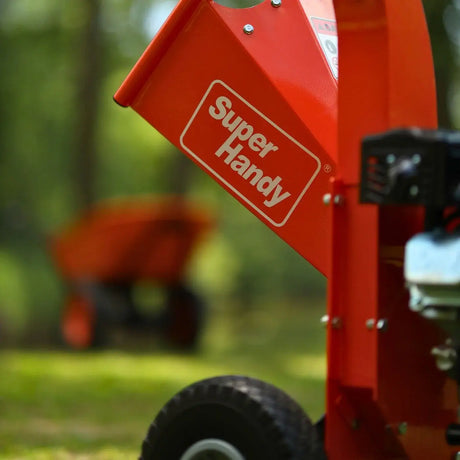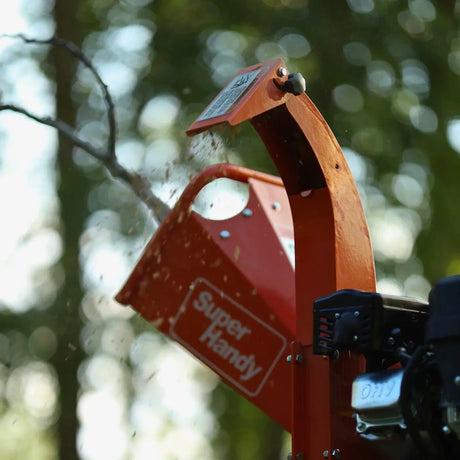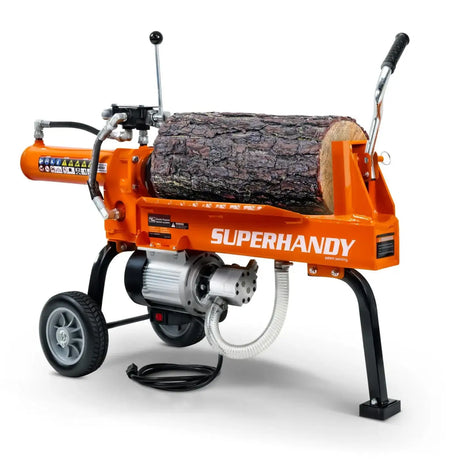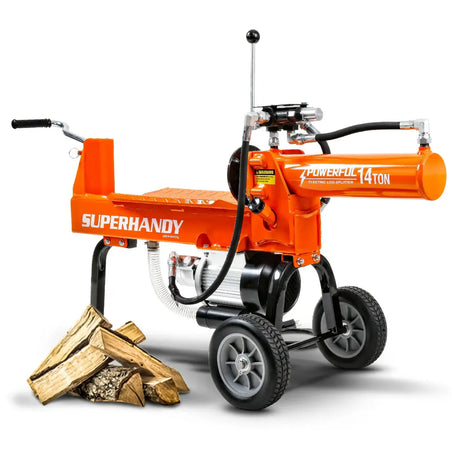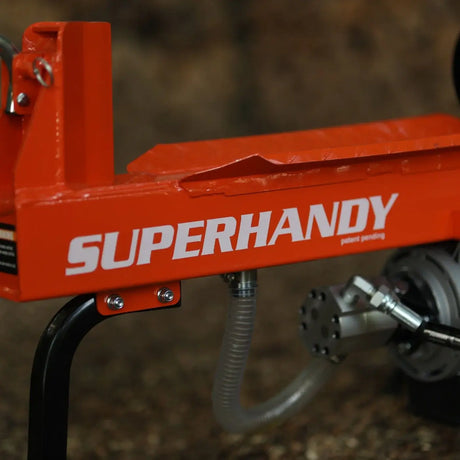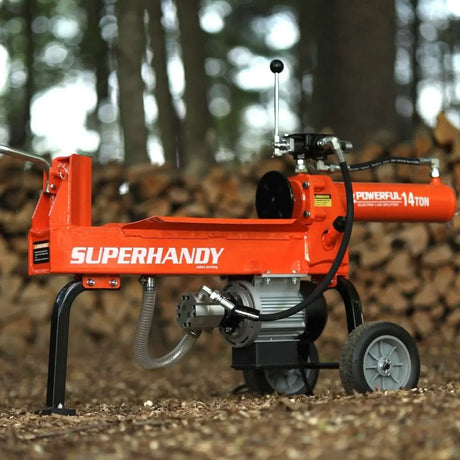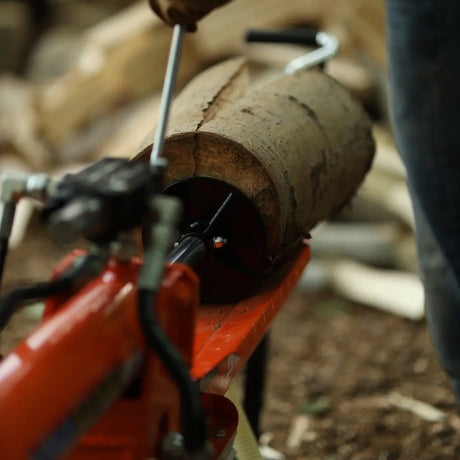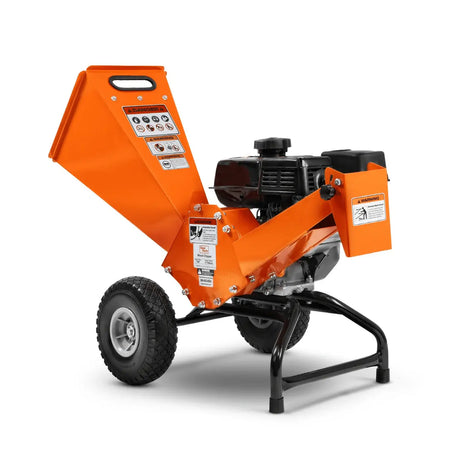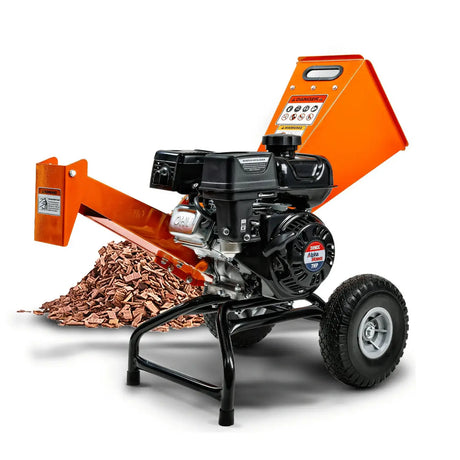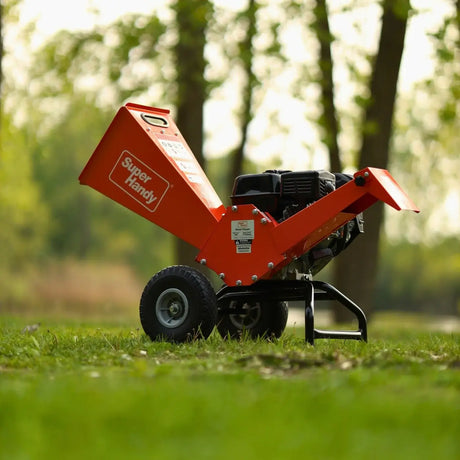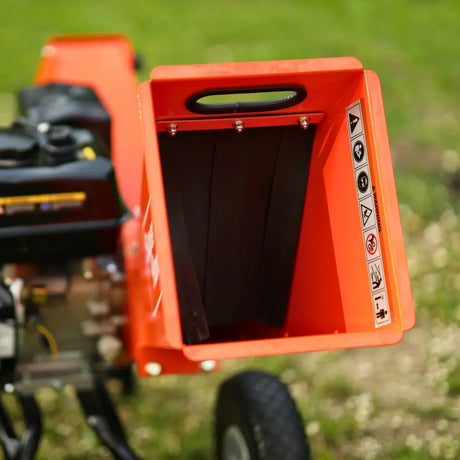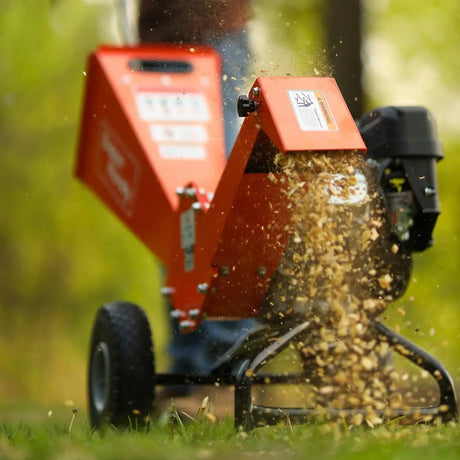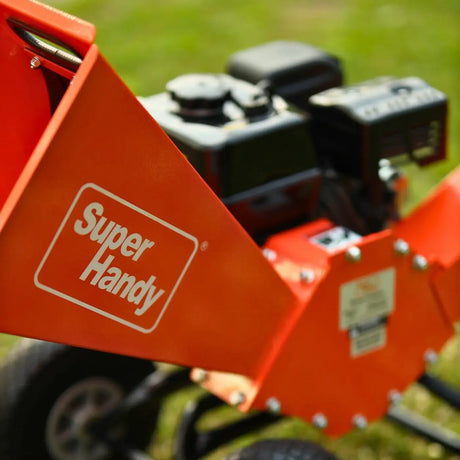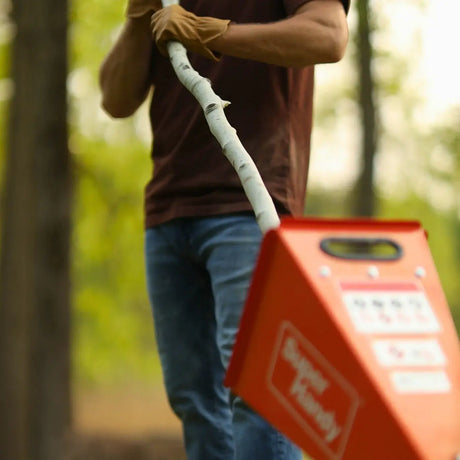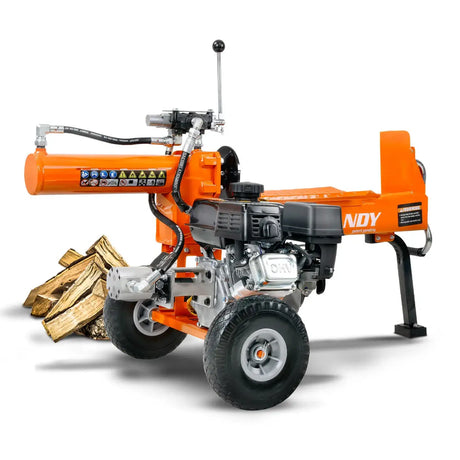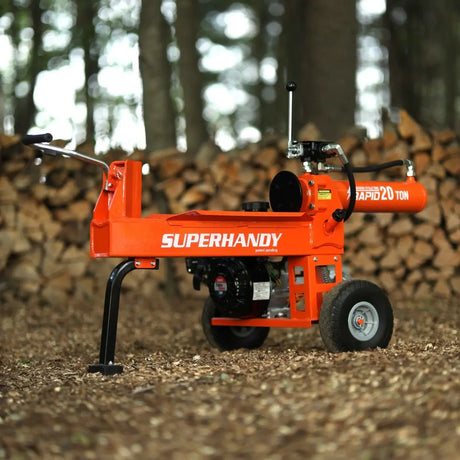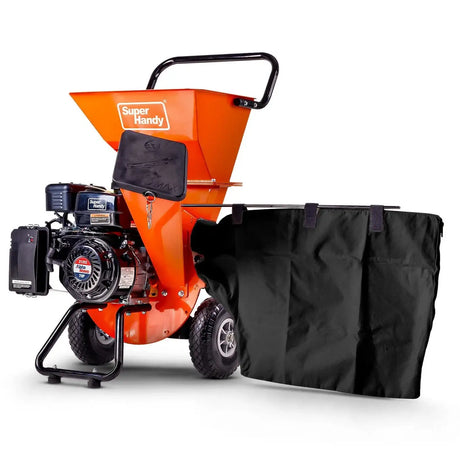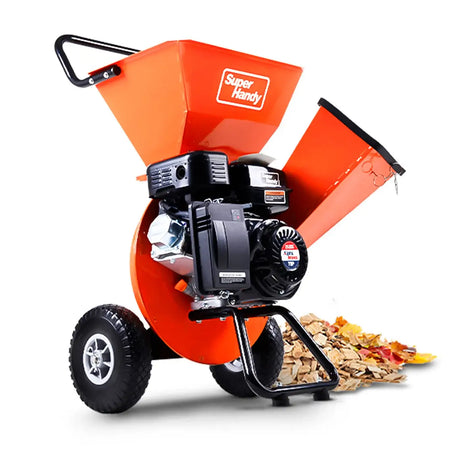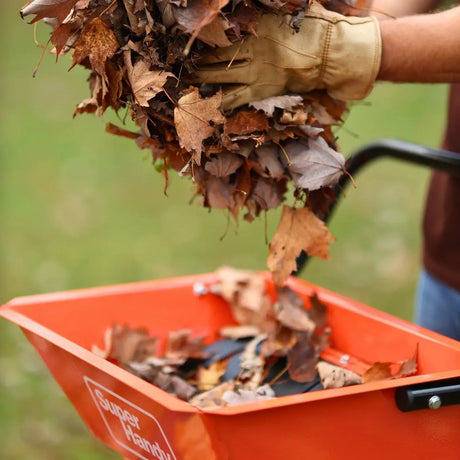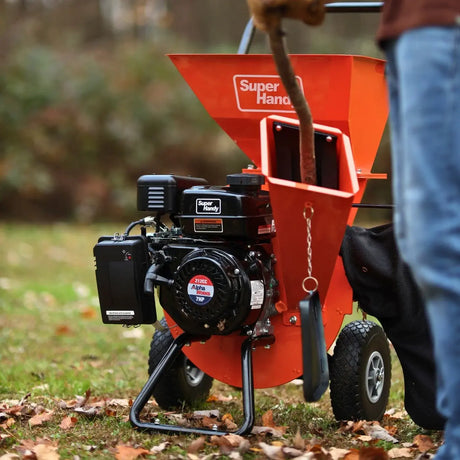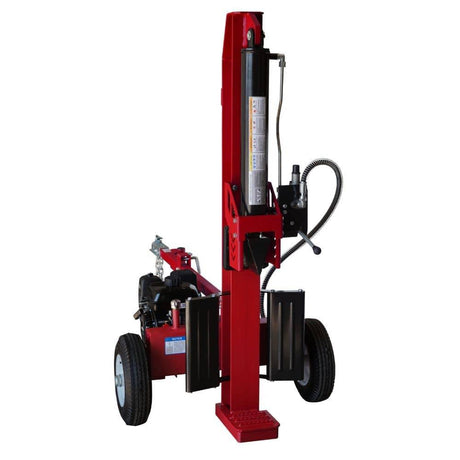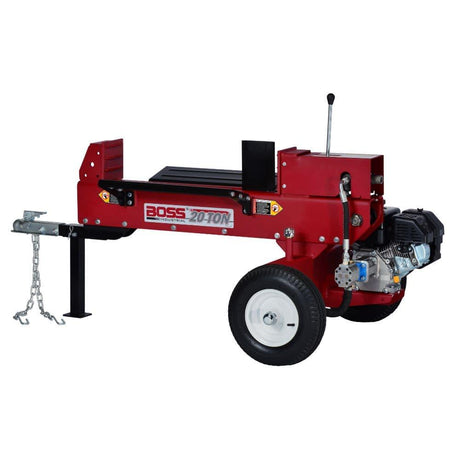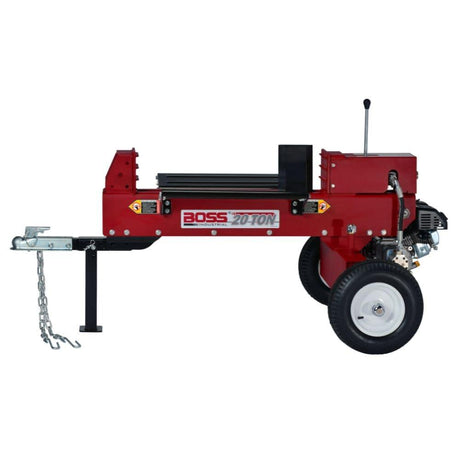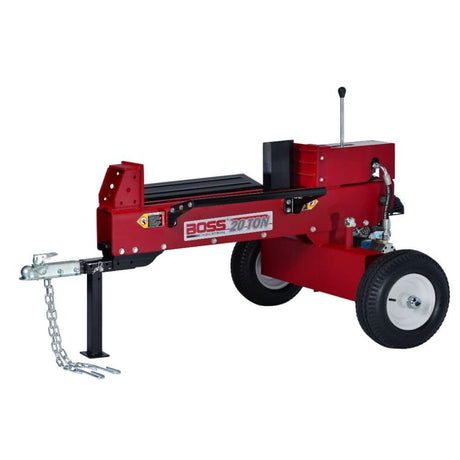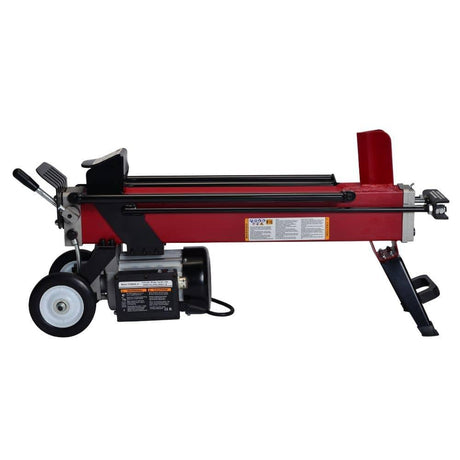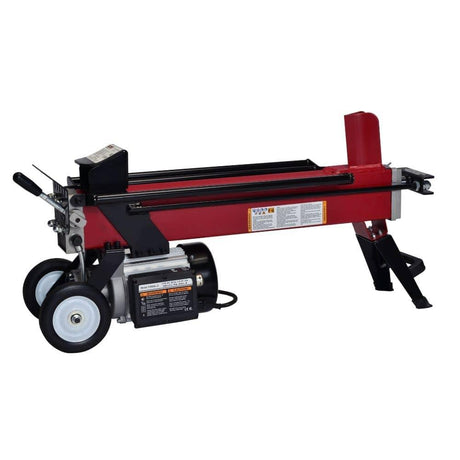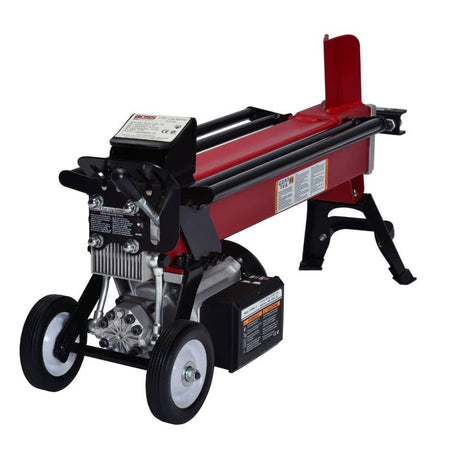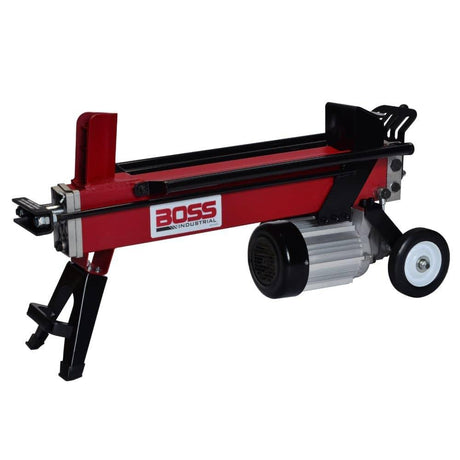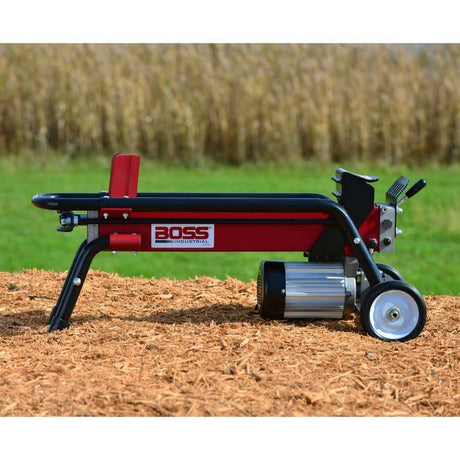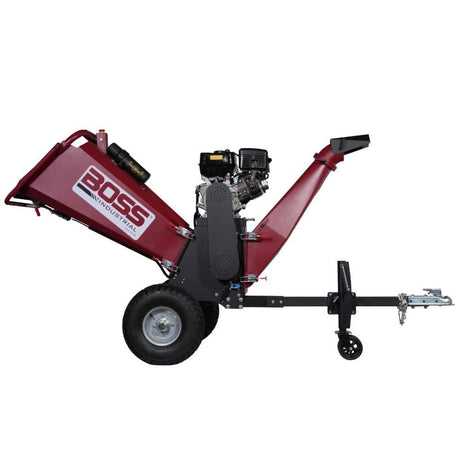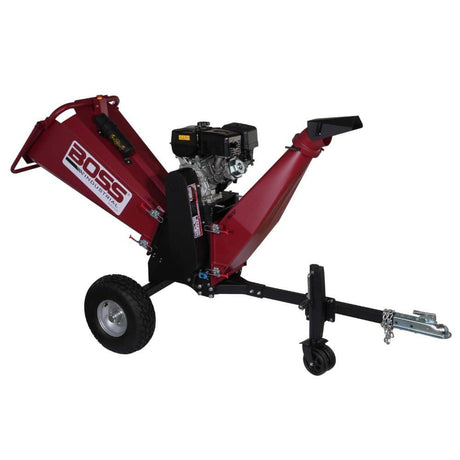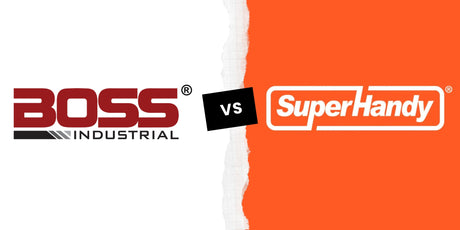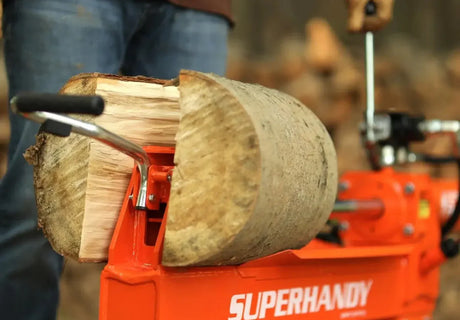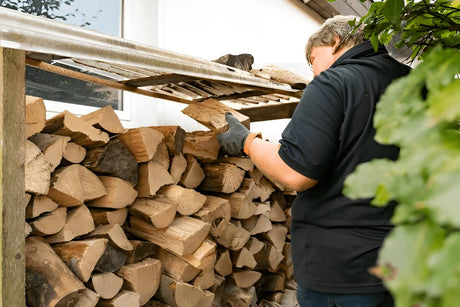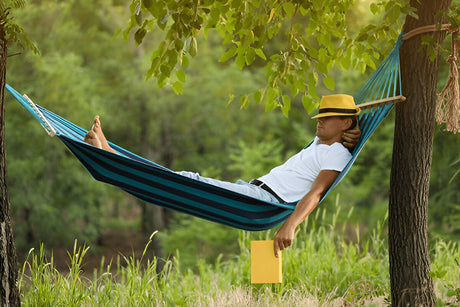Mistake #1: Feeding the Wrong Material Into the Machine
One of the fastest ways to break your wood chipper-or rack up repair costs-is feeding it the wrong stuff. And no, it's not built to chew through everything in your yard.
What Should Never Go In (Treated Wood, Rocks, Vines, etc.)
Just because it looks like wood or yard waste doesn't mean it belongs in the hopper. Here's what to keep out:
- Pressure-treated or painted wood - These release toxic chemicals and gum up your chipper's internals.
- Rocks and dirt clods - Even small ones can dent or chip blades instantly.
- Ropes, vines, fibrous plants - These wrap around the rotor and jam the machine.
- Metal, nails, fencing - A single piece can destroy a blade in seconds.
I once saw a guy toss in a vine-covered branch without stripping it. The entire machine locked up mid-feed and took 30 minutes to clean out. Not fun-and totally avoidable.
Not sure what counts as a bad input? Here are 5 things you should never put in a wood chipper that will clog, jam, or damage your machine instantly.
How the Wrong Input Leads to Blade and Engine Damage
Feeding the wrong material into a chipper isn't just bad for output-it's brutal on the machine:
If you want to know what happens when you feed wet wood, see our wet wood guide.
- Blades dull faster, reducing chipping performance and putting more strain on the motor.
- Rotors can get jammed, forcing shutdowns or manual clearing.
- Engines overheat when material resists cutting or clogs airflow.
- Safety risks spike, especially with bounce-back from hard objects.
If you're using a wood chipper or wood shredder regularly, treating it like a precision tool-not a yard waste dumpster-will save you hundreds in repairs, parts, and downtime.
Mistake #2: Ignoring the Machine's Capacity Limits
Every wood chipper-whether it's a compact shredder or a heavy-duty gas model-has a limit. And pushing past that limit is a quick way to kill the motor or crack the drum.

Why Oversized Branches Burn Out Motors and Jam Drums
Wood chippers aren't meant to "power through" thick logs. They're designed for specific diameters-go beyond that, and you're forcing the machine to do something it wasn't built for.
Here's what can happen:
- The drum seizes mid-spin if it can't grip and cut through the branch
- The motor overheats or stalls, especially on electric models
- Belts snap, blades bend, and your machine grinds to a halt
- You lose control feeding it, increasing safety risks
I've seen users force in oversized limbs thinking they're saving time. Instead, they fry a motor and lose a weekend fixing it.
How to Know Your Chipper's Real Cutting Capacity
This part's easy-and too many folks skip it.
- Check the manual or the sticker on the machine. Most chippers clearly state max branch diameter.
- Use a tape measure on larger branches before feeding them in. Don't guess.
- Cut down big logs with a chainsaw before chipping. It's safer and far easier on the machine.
If you're unsure what your machine can really handle, check out our wood chipper size guide to avoid overloading it.

Mistake #3: Skipping Regular Maintenance
Just like a chainsaw or lawn mower, your wood chipper needs regular attention. Skip the basics, and you're not just losing performance-you're risking expensive repairs down the line.
Dull Blades, Loose Belts, and What They'll Cost You
When blades get dull, they don't cut-they tear. That strains the engine and leads to uneven chips (or clogs). Loose belts? They slip, wear faster, and eventually snap.
Here's what neglecting maintenance can cost:
- Dull blades = Poor performance, engine strain, fuel waste
- Loose or cracked belts = Sudden breakdowns mid-job
- Clogged vents or debris buildup = Overheating and permanent motor damage
- Skipping oil checks (on gas models) = Shortens engine life dramatically
I've seen folks burn out perfectly good machines just because they never cleaned or checked anything. It doesn't take long-but it makes a huge difference.
Quick Maintenance Habits That Extend Machine Life
You don't need a full toolbox-just a little routine care:
- Check blades before every use - If they're nicked or dull, sharpen or replace them.
- Tighten belts monthly - Or sooner if you use the chipper often.
- Clear debris after every job - Around the chute, vents, and under the drum.
- Oil and fuel checks - Especially important for gas-powered models.
- Store it dry and covered - Moisture is the enemy of every moving part.
Stay on top of these small tasks, and your wood chipper or shredder will stay reliable for years-not months.
Want a full breakdown of weekly, monthly, and seasonal maintenance? See our ultimate wood chipper maintenance guide to keep your machine running like new.
Mistake #4: Using It on Uneven or Unsafe Ground
It might not seem like a big deal at first-but where you place your wood chipper can make or break the job. Uneven or unstable ground is a hidden hazard, especially when you're working with powerful, fast-spinning machinery.
If you want to budget correctly, check out our how much a wood chipper costs.
Why Machine Stability and Feed Angle Matter
Wood chippers and wood shredders need to sit flat and steady. If the machine is tilted or wobbly:
- The rotor becomes unbalanced, which can wear internal parts faster.
- Feed angle gets thrown off, making branches harder to insert cleanly.
- You risk the machine shifting while in use, especially if it's on soft soil or sloped terrain.
Think of it like trying to cut a board with a circular saw while standing on one foot. Everything's harder-and more dangerous.
Preventing Kickbacks and Tip-Overs
Poor footing doesn't just hurt performance-it creates real safety risks:
- Kickbacks happen more often when material binds awkwardly due to poor angles.
- A slight lean in the wrong direction can make the chipper unstable when feeding in larger branches.
- Loose footing (like gravel or mulch) increases the chance of tip-overs, especially with smaller, lightweight models.
Here's how to avoid it:
- Set up on solid, level ground-pavement or packed dirt is ideal.
- Use wheel chocks or stabilizers if the machine moves while feeding.
- Stand to the side while feeding, not directly in front-just in case the branch kicks back.
Stable ground = safe chipping. It's an easy mistake to avoid-and a big one to regret if you don't.
Mistake #5: Rushing the Feed Process
When you're in cleanup mode, it's easy to get into a rhythm-and then push it too far. But forcing material into your wood chipper too fast is a sure way to wear it down or even cause a breakdown. Slow and steady isn't just safer-it's smarter.

Why Cramming or Overfeeding Wears Out the System
Wood chippers and wood shredders are designed for a consistent, manageable flow of material. Overloading them disrupts everything:
- Blades can't spin freely and may bind up mid-cut
- The motor strains to keep up, especially on smaller models
- You'll see more clogs and jams, especially with wet or awkwardly shaped branches
- The whole feed system wears faster from constant pressure
I've had customers burn out belts or stall a perfectly good machine just because they got impatient. It doesn't save time-it costs time.
Safe Feeding Techniques for Efficient Chipping
Feeding the chipper right makes all the difference in how well it performs-and how long it lasts:
- Feed one branch at a time, with the thick end going in first.
- Let the machine pull the material in-don't shove it.
- Clear smaller twigs or leafy debris in between larger limbs to avoid buildup.
- Listen to the engine. If it starts to bog down, pause and let it recover.
Think of it like a conveyor belt. Smooth input = smooth output. No need to rush-just let the chipper do its job.
If you’re deciding whether to buy or rent, check out our buy or rent cost comparison.
Mistake #6: Ignoring Safety Gear and Procedures
Wood chippers and shredders don't give second chances. These machines are powerful, fast, and unforgiving. Skipping safety gear or rushing your setup might save a few minutes-but it could cost you a whole lot more.

Essential Protective Equipment You Should Always Wear
Before you fire up that engine, make sure you're geared up. At a minimum, you should be wearing:
- Safety glasses or a face shield - Chippers can fling wood chips at high speed.
- Hearing protection - Most gas-powered machines run loud enough to damage hearing.
- Gloves with grip - For feeding branches and keeping control.
- Fitted clothing and no jewelry - Loose gear can get caught in moving parts.
- Steel-toe boots - In case a heavy branch or log slips.
Even experienced landscapers don't skip this stuff. It's just not worth the risk.
Common Safety Shortcuts That Lead to Accidents
Here's what people do wrong-over and over again:
- Reaching into the chute while it's still running
- Standing directly in front of the feed opening (where kickback happens)
- Letting kids or pets near the work area
- Chipping without checking for nails, rocks, or foreign objects
Don’t take chances—our wood chipper safety tips walk you through the must-do safety checks before every use.
Bottom line? Use your chipper with respect. Follow the basics. It takes seconds to gear up, and it can save your hands, your eyes, or worse.
Mistake #7: Letting Debris Build Up in the Hopper or Discharge Area
It's easy to overlook this one-especially when you're focused on getting through a big pile of branches. But letting chips, dust, and shredded debris pile up around your wood chipper or shredder is asking for trouble. Blockages don't just slow you down-they can do real damage.

How Blockages Lead to Overheating and Fire Risks
When material backs up in the hopper or discharge chute, airflow drops and friction builds. That combo leads to two major problems:
- Overheating - The motor has to work harder to force material through, and if airflow around the engine is blocked, heat builds fast.
- Fire risk - Dry chips packed near a hot engine or muffler can ignite. It's rare-but it happens, especially in dry, dusty conditions.
I've seen mulch catch fire on a hot summer day simply because the discharge chute got clogged and the engine overheated. It doesn't take much.
Easy Ways to Keep Your Chipper Clean and Clear
This is one of the simplest maintenance habits-and it pays off big:
- Check the discharge chute every 15-20 minutes on big jobs. If chips are building up, stop and clear it.
- Turn off and cool the machine before removing stuck debris-never reach into a running or hot machine.
- Brush off loose chips from the housing, vents, and engine area after each use.
- Store it clean and dry, so old debris doesn't cake on or attract moisture.
Clean chipper = safer, smoother performance. It only takes a few minutes, but it can save you from a ruined motor-or worse.
If you’re running into motor stalls or odd noises, head over to our wood chipper troubleshooting guide for step-by-step fixes.

